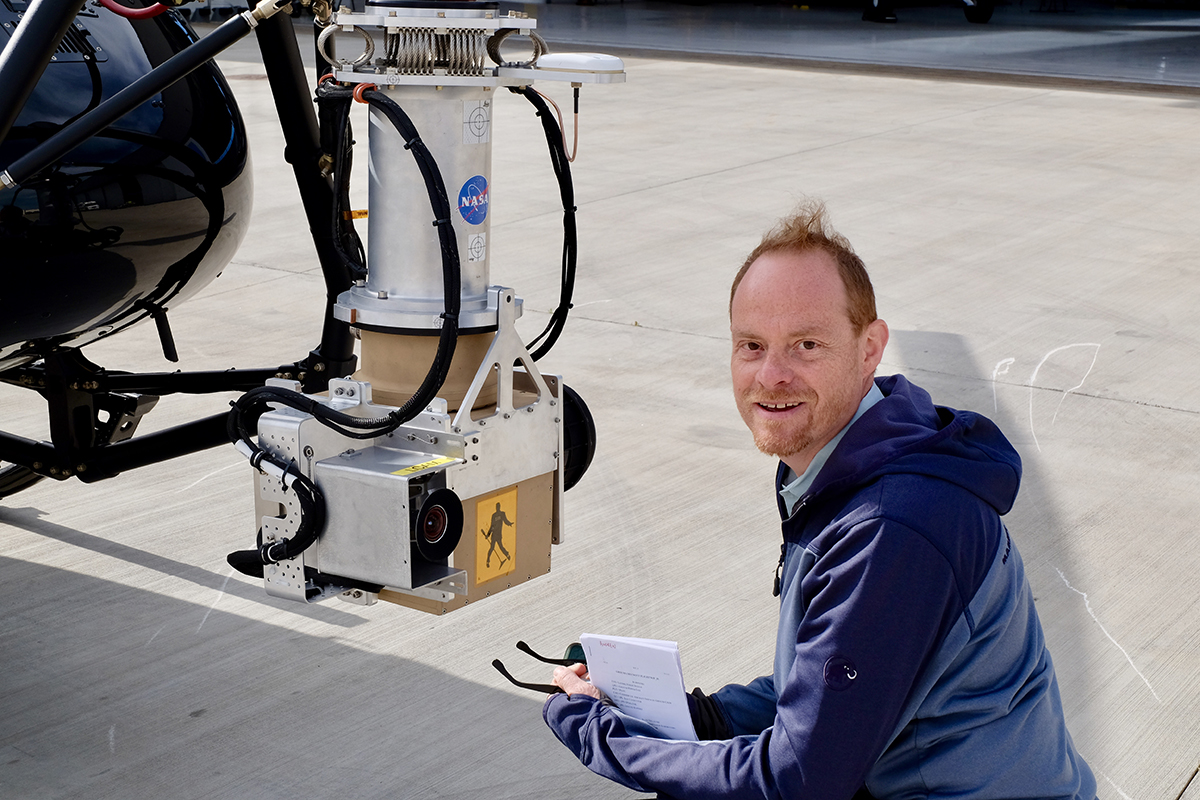CMU Robotics Alum Leads Development of Critical Landing Technology Computer Vision System Will Enable Safe Martian Landing for NASA's Perseverance Rover
Byron SpiceMonday, February 15, 2021Print this page.

"LVS Valid"
The message would sound cryptic to most people, but for Andrew Johnson, a principal robotics system engineer at NASA's Jet Propulsion Laboratory, receiving it from Mars on Thursday will mean everything. It will mean that the lander vision system his team developed worked properly and that NASA's Perseverance rover is one step closer to landing safely on the Red Planet.
Johnson, who has worked at JPL since earning his Ph.D. from Carnegie Mellon University's Robotics Institute in 1997, has spent more than eight years developing the LVS. It is critical to successfully landing Perseverance within the rugged expanse of Jezero Crater, where it will gather rock and soil samples in a search for microbial life.
Computer vision will play an unprecedented role in the landing, ensuring that the rover avoids such obstacles as boulder fields, dunes and crater walls in the final seconds of its seven-month journey to Mars.
"The landing will be a huge milestone for me and my team," Johnson said. "All of our development work will culminate in the landing, particularly the last 60 seconds."
Johnson studied computer vision at CMU under the tutelage of Martial Hebert, now dean of the School of Computer Science. It's a technology that he helped NASA employ on the Mars Exploration Rovers mission in 2004. In that case, though, computer vision was used to estimate motion, not determine the craft's position on a map.
Determining position is much harder, he said, and is essential to the Mars 2020 Rover mission. Mission scientists want the rover to explore what was an ancient river delta, collecting samples that will later be returned to Earth. But that terrain also is treacherous for landing a spacecraft, which necessitated a new system for landing places that previously were inaccessible.
After Perseverance enters the Martian atmosphere at almost 12,500 miles an hour, it will deploy a parachute to slow its descent and the LVS will begin taking photos, matching the images with orbital maps of Jezero Crater. This Terrain Relative Navigation System will become critical as the craft nears the ground and jettisons the parachute. During the rover's powered descent to the surface, the algorithms and software in the spacecraft will divert the landing as necessary to avoid any hazards.
In addition to software, the system required the team to design a special, high-speed computer. Johnson explained that space computers are rugged and built to withstand the harmful effects of radiation, but run slowly relative to a typical PC back on Earth. The new computer vision system, however, requires a computer that can process images in real time.
JPL extensively tested the system, including test flights in 2014 on a vertical takeoff and landing rocket in the Mojave Desert. But uncertainty necessarily remains, Johnson said.
"We can't fully test these systems until we get to Mars and they have to work perfectly when they do," he added.
He will be at Mission Control for the landing, where he will monitor the temperature of a camera. But the landing itself has to be hands off: the descent takes about seven minutes, but it takes more than 10 minutes for a radio signal to reach Earth from Mars.
"The rover has essentially landed by the time we get the signal that it has entered the atmosphere," he said.
And thus, after so much work and preparation, he can only await the message, "LVS Valid."
Byron Spice | 412-268-9068 | bspice@cs.cmu.edu
